I have heard Vyger with:
1. Vyger Indian and Atlantis – Red Sparrow – Mayer phono and pre and amps into single driver Pnoe with AER. Compared with swaps of phono, poweramps, and carts such as the basic models of Etsuro and Grado, and Garrard
2. Vyger Atlantis – Madake – NVO Spa II into mastersound and single drivers Stamm based Loth Minstrels at Bill’s (AudiophileBill on WBF) and with Maggies
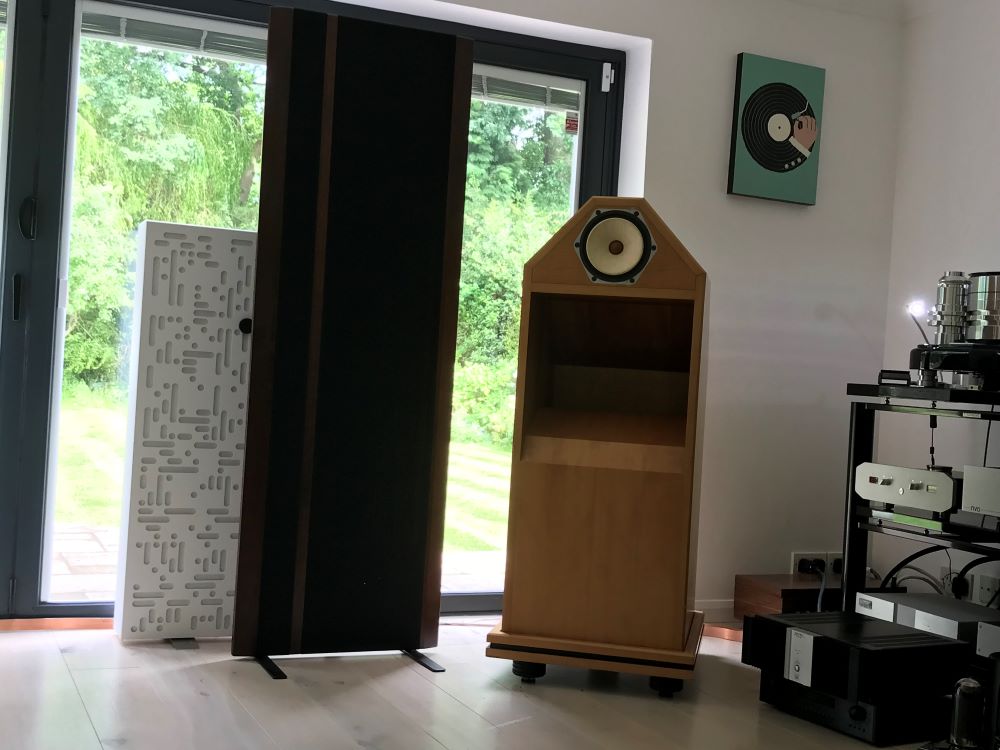
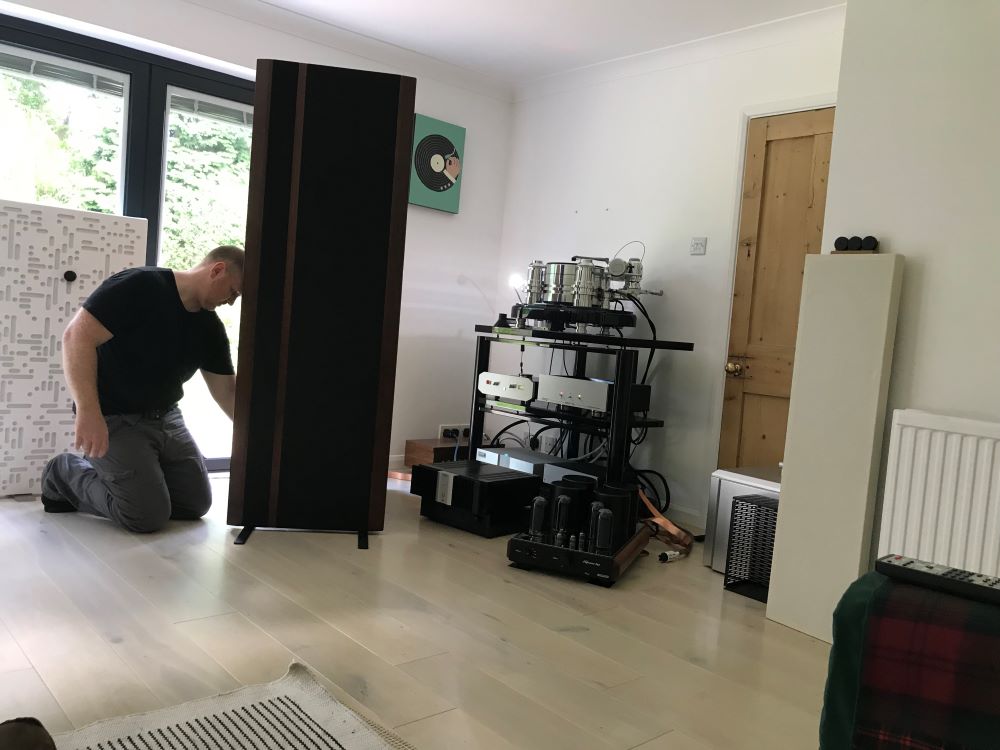
3. Vyger Atlantis and Indian Red Sparrow – NVO Spa II – Mayer pre and power into BD Swing horns (2-way) at Bill’s followed by his own DIY 2-way AER. The Vyger was then replaced by Bergmann Sindre and Red Sparrow, to continue with the theme of a red sparrow on linear tracker at a lower cost. Bill then got the Horning TT and added a pivoted arm, and the red sparrow stopped sounding as good, after which he sold it and off and mounted the DaVa, another excellent sounding cartridge.
4. Vyger Indian – Red Sparrow – Kondo SUT – FM 122 MM phono into Yamamura electronics and Yamamura’s single driver speaker. The write-up on Vess’ system in Bulgaria will be published soon. Vess is a distributor of fine audio in Sofia, Bulgaria, which houses some of the best horns. Will write more on him later, He replaced two micro seiki 8000 with two Vyger, and also has a continuum caliburn with the cobra, and his client has an excellent Tune Audio Anima jazz bar in the city.
5. Before, back in 2018, I also compared an older Vyger model modded by taking off the linear tracker and adding a DIY Pivot to a modded Kodo beat with various carts. I guess this data point from a linear tracking perspective can be ignored as used a pivoted arm.
6. Gian’s Vyger Atlantis with Opus, Lyra Atlas
7. Gian’s Vyger Atlantis before it reached Gian, I got to listen at his dealer’s with a Zyx
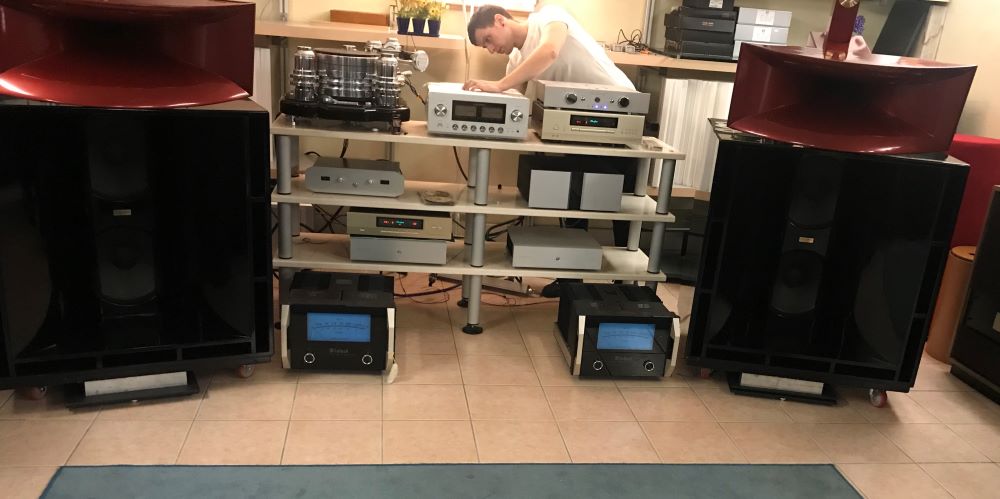
8. Vyger Indian with Kondo IOM into Kondon Ongaku and Absolare, Diesis’ top of the line speakers
9. Vyger Indian with MSL into Allnic H5000 phono on the linear tracker. DS Master on Da Vinci Grandeza 12″ arm, the table had been modified to add an additional arm. Koda K70, Sigma MAAT speakers, recently in July 2022
10. Vyger Indian with Zyx ultimate omega S, Lamm hybrids and Sigma MAAT speakers in Sept 2022
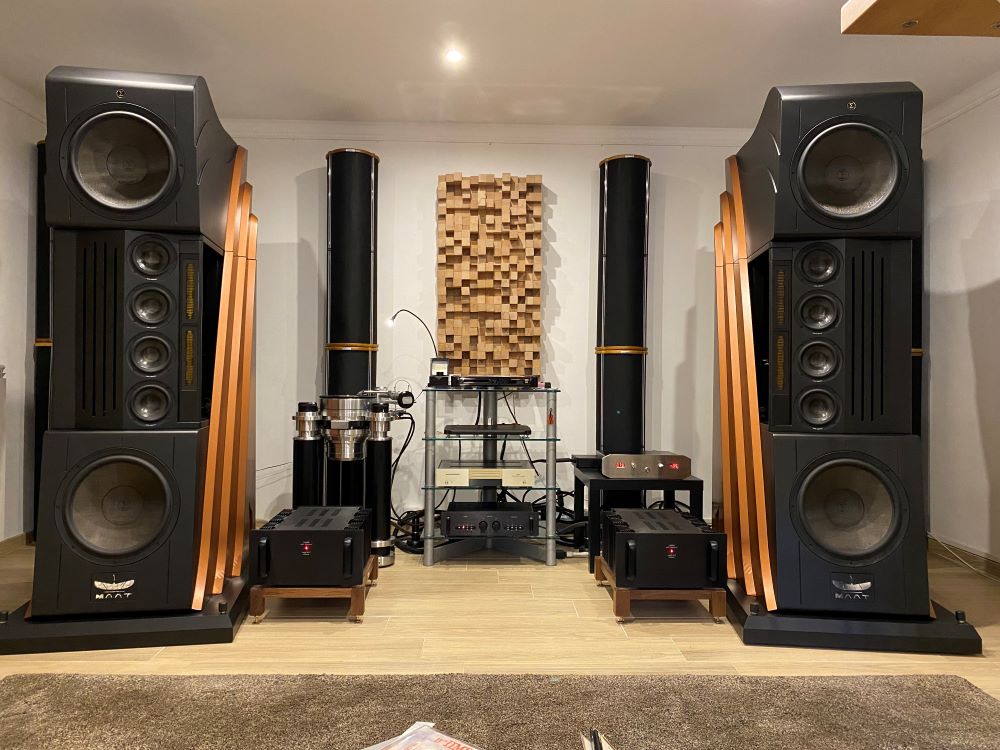
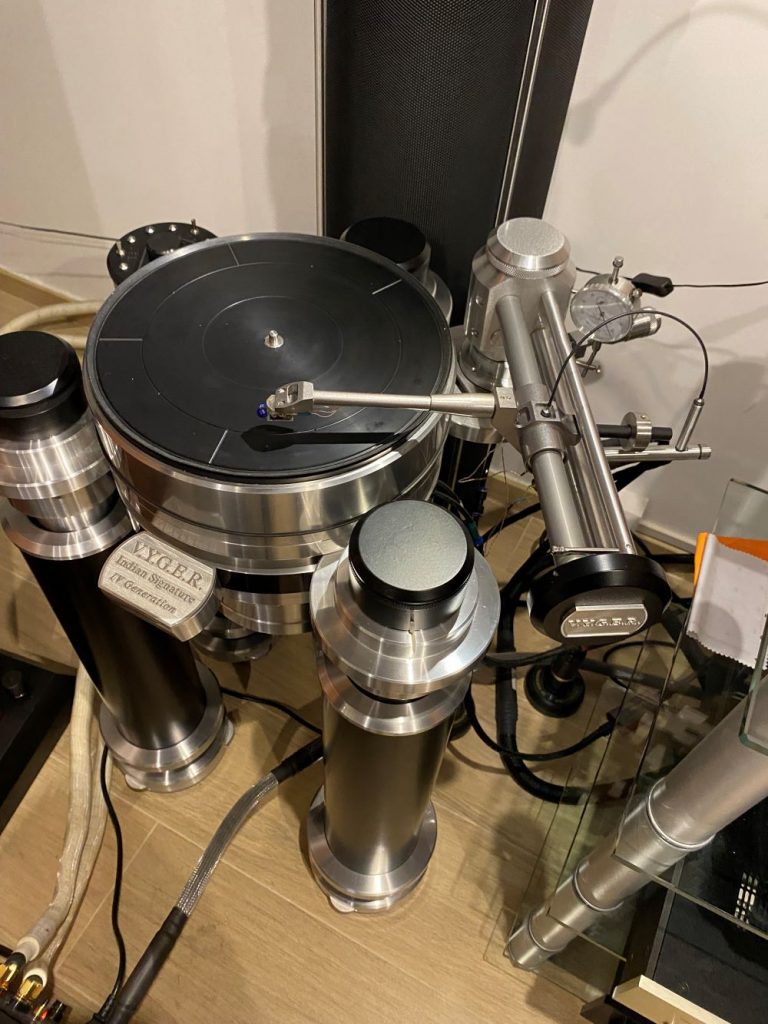
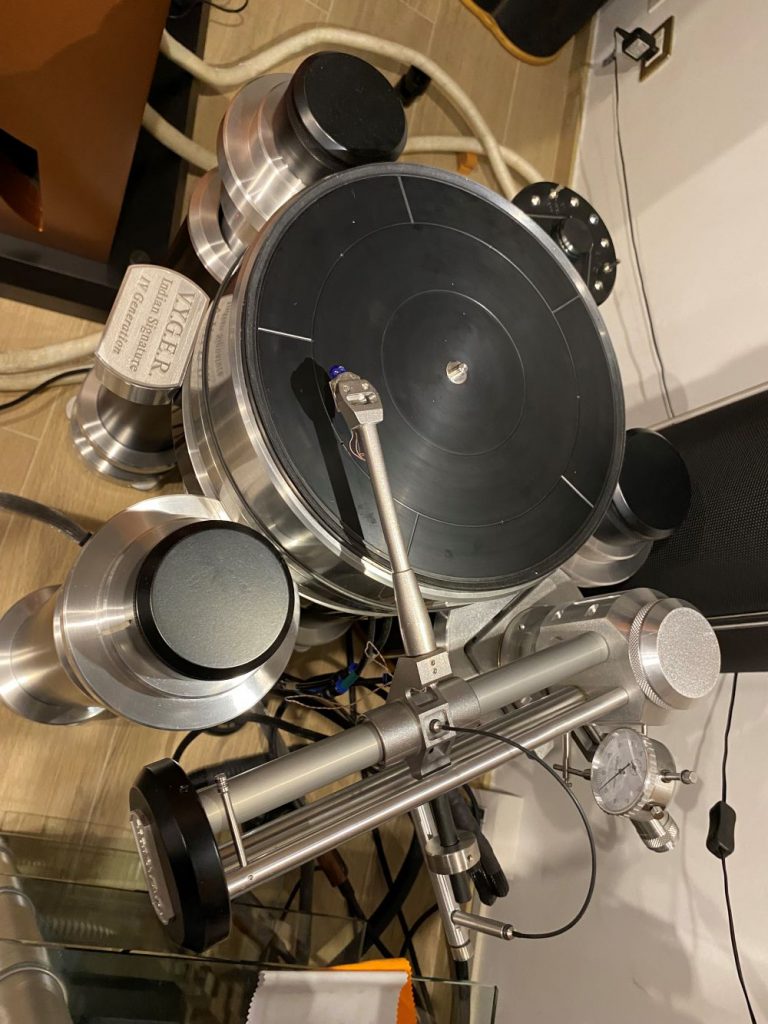
I have separately heard Sigma MAAT with NAT’s top of the line amps Magma New and Techdas AF2 with Schroder CB and Thales Statement arms which I will cover in a separate report on Sigma MAAT. I have also heard them with an all Kondo set up and Kondo Ginga and Da Vinci turntables, and that will be covered in the Sigma MAAT report.
I will address below what the Vyger does well, and the caveats
I will also add what those who are budget constrained should do to find out if linear tracking is more preferable to pivots in their system.
And finally, whenever I recommend Vyger to friends, some worry it can be a complicated machine to manage. I therefore visited Vyger in Rome to understand if there were any tips from the designer himself.
Now, I will be separately writing an article arguing that you do not need to spend much on a turntable. Spend on records, get a decent TT, then optimize with arm and cart match. Then spend more on records. Records are expensive. That said, I also plan to write on some super tables, starting with Vyger which in its cost has in built a fantastic linear tracker and a vacuum so you you save costs on expensive set up accessories and record flatteners. After having heard many expensive tables, and filtering out the ones I do not like, considering only those that I do – once you get to a reasonable level, which I will define in that article, very few from the set of good tables offer for me anything more for higher prices except a bit of this or a bit of that. Vyger stands out as one of the exceptions that I still consider sonically high value.
Now – the Vyger Red Sparrow was, by far the best analog set up I have ever heard. I started off listening to it with the best music and pressings at the General, so for a while I held my excitement about it at bay in case it was the quality of the source material and the musical magic that was creating a bias. 1.25 and 3w Thomas Mayer amps driving a full range driver was also an unique approach, so I could not at that time consider Vyger in isolation, despite hearing it in a system I have always desired but am unable to recreate due to budgetary constraints.
I remember my surprise at Bill’s when even the small Loth Minstrels (another full range driver but with limited bottom end extension) and his BD Swings with BMS drivers and active bass below 150 Hz showcased the Vyger magic. It was the first time with a Vyger that I heard the Magnepan lower models to have good midbass.
If you are one who uses good quality recordings for classical, jazz, blues, etc, the Vyger with the red sparrow is to my ears leagues ahead of any other analog set up for most horn based systems. VDH Stradivarius in a pivoted arm comes close, though that description aside the sounds are completely different. If one needs to use a very high compliance cartridge like the vdh, or any with soft dampers with the Vyger, the arm needs to be requested for such as Pino (Giuseppe Viola, the designer) will adjust the arm accordingly.
So Ked, what is it about the sound that drives you so? Pivots can also do bass, tone, wide and deep stage, as can Vyger. Additionally, whenever I have heard the Vyger do well, the nuance and agility is the highest with excellent transient attack. The transients are quick, clearly articulated so they are not sharp noises but add to the music. Usually I find these glossed over. A pivoted arm combo with the vdh strad is very nuanced and has fast transients as well, and as such appeals to those who look for such sound. The Vyger red sparrow was brilliant at the leading edge and playing down to the middle of the note highlighting the contrast and inflections of the notes. The differing textures across notes were more clear.
So, do the other carts apart from Red Sparrow sound good on Vyger? I have heard it sound good with Zyx, MSL, and the Miyajima. My favorite on it is still the Red Sparrow. The Miyajima has a natural tone and not much resolution for musical nuances. I would love to hear the Atlas Lambda or Lyra Olympos on the Vyger. Others have used it successfully with Koetsu, Decca, Benz, and Art 9. Pino himself also likes the Dynavector, MSL, Airtight.
Now, when the Vyger is well set up, other points it separates from the rest – and one of the main reasons LT fans like LTs – is the lack of distortion in the highs. As violin escalates, it just goes up so cleanly, without distortion. Also, the music is effervescent – it just is there, with immediacy. This is the point that tips the scale for me. Effervescence is not a word I used in audio before, but it came to my mind listening to the Vyger in different situations. The highs are more grainless, more nuanced, and continuity and flow is excellent. The space between the speakers is more coherent in sound like a mono.
Not sure if those unfamiliar with the style of music and Vyger can recognize the commonality between these two very different systems linked from Youtube:
The speed, cleanliness of transients, the pitch, the highs, the stretch of each note, the splitting of the strings, the nuance, this is what drives me to this beast.
The issue with Vyger was, I have also heard it not do well. Therefore, after the pandemic, once I started traveling again, I sought opportunities to find out what made Vyger work, and what didn’t. Those who like and respect Vyger , including Pino himself, are very clear – this is not a table for everybody. You have to enjoy spending your time with a turntable to get it to sing. It is not plug and play.
Back in 2018, when I visited Misho to listen to the Altecs in Varna, Bulgaria, I also stopped in Sofia. At Sofia I met Vess, where I heard two micro seiki 8000 tables, with 4 SME 3012r arms on each, and a variety of carts from Top Wing Red Sparrow, Etsuro Gold, Sumile, and a few others, into an Aries Cerat Symphonia with Aries Cerat electronics. I will write more on Vess and his other systems later.
I enjoyed my time there, he took my Vyger recommendation, and ordered two Vyger Indians. He found them sonically better than his MS 8000, and while I was not able to compare the two in person due to the pandemic, I did have the videos of the 8000 that I took myself, and was texted the videos of the Vyger with the Red Sparrow. Vess had set it up purely via the manual, as during the pandemic Pino could not travel to Bulgaria to optimize it.
Vess had read my blog, realized I loved Pietro’s Yamamura system, and he visited Pietro in Milan. Pietro’s Yamamura was/is the best speaker I heard, and is run with Yamamura amps. Vess heard it and fell in love. He bought the entire Yamamura system from Pietro. A year after the Yamamura exchanged hands, Pietro unfortunately passed away.
The Yamamura were in a beautiful house in Sofia, with the Vyger Red Sparrow as the source. I had been itching to go there for a while but the pandemic affected my plans. Once I started traveling again, it became a priority destination.
Meanwhile, during the Pandemic, Vess had also bought the Continuum caliburn with the Cobra arm, to which he added the Etsuro Gold. Again, I will write more on this in Vess’ visit. He also had a TD 124 with the DaVa.
Michael Fremer has mentioned online that of his friends who own the Ferrari and the Continuum, they are most proud of their Continuum. After my visit to Vess in 2022, if I could afford to bring back something, it would have been the Yamamura system and the Vyger.
That visit jolted my writing out of slumber, and the words for this article began to flow. I still had to hear the Vyger do well with conventional cone speakers, as I had only heard them excel with SETs cones. I therefore searched, found Bjarne in Denmark, and scheduled a visit. Bjarne, with his Koda K70, Dagostino preamp, Allnic H8000 phono, and the 300kg + Sigma MAAT Vector XDC in a beautifully treated room, had set up the Vyger to play amplified music, jazz and rock. I was later to learn that he was good at setting up Vyger, and I heard the Vyger with the MSL. It was again musically addictive, and we spent approx. 10 hours listening to a variety of music on it without any fatigue.
Bjarne’s visit got me interested in Sigma MAAT, and I found another user in Rome, Manrico who bought a Vyger Indian last year with Sigma MAAT and Lamm pre and M1.2 amps. I will be writing a detailed article on the MAAT shortly. He ran his Vyger with a Zyx Omega S Ultimate. Getting Vyger for a first table is like getting a driving license in your teens and heading for the ferrari on a race track.
Vyger now also resides in Rhapsody Dallas with Magico M9, it has been with single driver horns with 1.25 watt SETs, with Be Yamamura horns, in Rhapsody Brooklyn with various state of the art gear. You can contact Rhapsody to understand Vyger vs Kondo Ginga, as they have both. You can read Marshall Nack’s review from over a decade ago, with an older model, where he has worded well the transparency to recordings which is what I hear with the Vyger https://positive-feedback.com/Issue42/vyger_atlantis.htm
The Vyger can sound sluggish, bright, reduced stage, etc when not correctly set up. Is it difficult to set up? I am not sure. You do not necessarily need Smarttractor or Analog Magik. It does not require a record flattener as it has a vacuum to help out with warped records.
So what is this complex set up people are worried about then? My guess is that as people are used to normal pivoted arm tables, might not be able to visualize how to set up a table that looks like a complex oil drill. TT users have varying degrees of experience, from the newbies to dyed in the wool. The below section is only for those who are not familiar with Vyger, would like to consider it but were apprehensive due to assumed complexity. For those who are familiar and think I am over simplifying, can smile and move on. Pino was assembling an Atlantis, and I requested he show the best tips to set it up.
- Use a digital leveller on the platter till it goes to zero. Do so by adjusting the tower on the right (if you are standing behind the arm)
2. Do the same levelling to zero on the tonearm by adjusting the screws. This brings the platter and tonearm parallel.
3. Use a mirror on the platter to set VTF to 0.1g. See if tonearm falls to one side or the other. If it does, bring it to a still by lowering or increasing the tower on the left (if you are standing behind the arm). Periodically check levelling as when the table is new, over the first couple of months the suspension continues to settle and the level can change.
4. The black airpipe that connects to the arm, at times it falls to one side. Bring it up vertical.
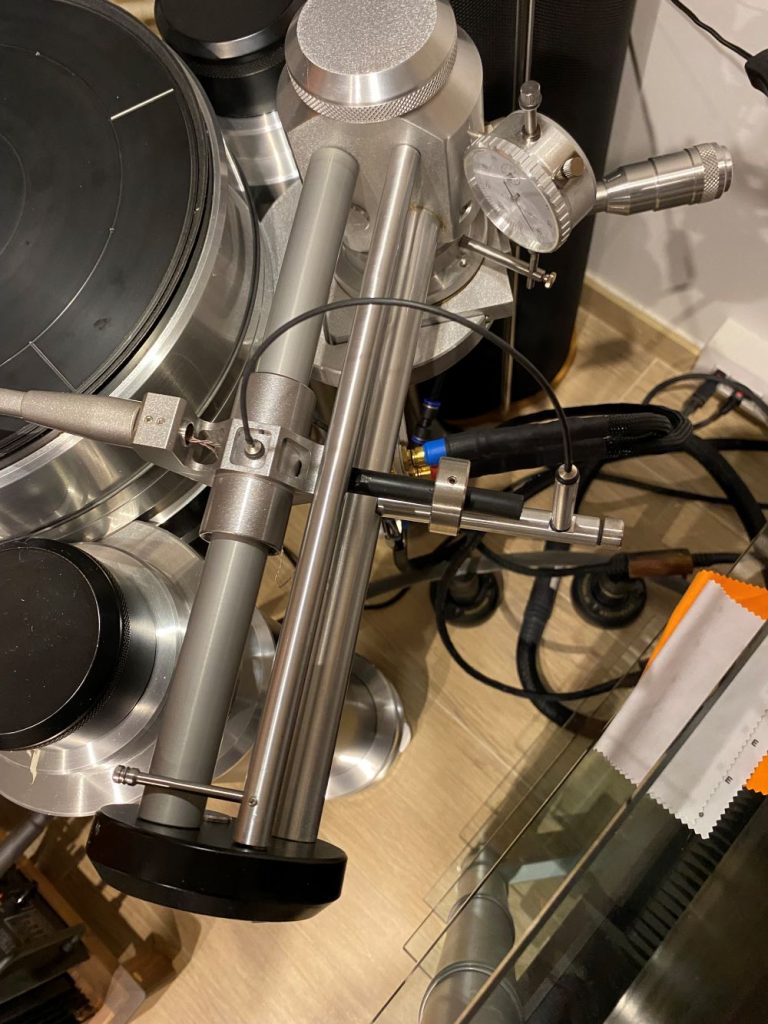
5. Use the air pressure knob to increase or reduce, depending on the sound of the transient.
Keep the platter clean to avoid dust getting to LP when vacuumed
Whoa Ked, all this great, you seem excited, but…is this only for classical, jazz, and sets and horns?
That’s my personal preference. Bjarne has set it up for amplified music including bass and electronica. I would say the Red Sparrow is more for classical and jazz and for amplified look at another cart.
But I want more than one arm. Well, do what Bjarne did. Get a local metal engineer to cut various arm boards depending on the pivoted arm you want. He has a Grandezza with DS Audio Master alongside. I much prefer the Vyger arm with the MSL. The Magico Q7 mk2 I heard with the Vyger also has modded armboards for pivots.
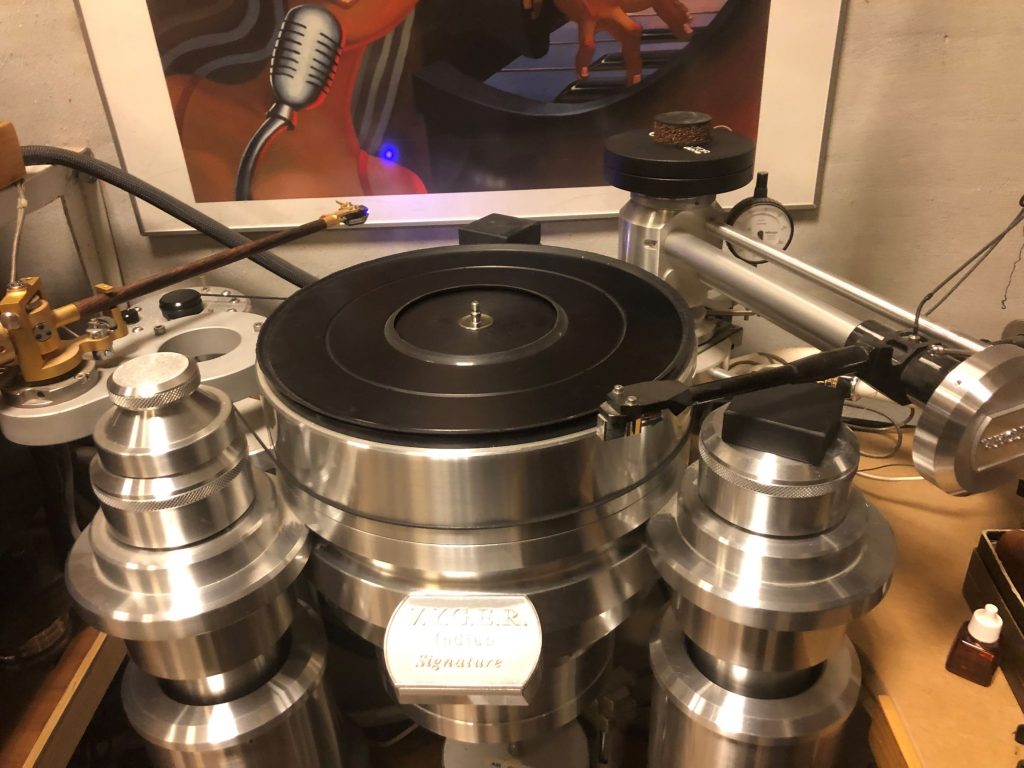
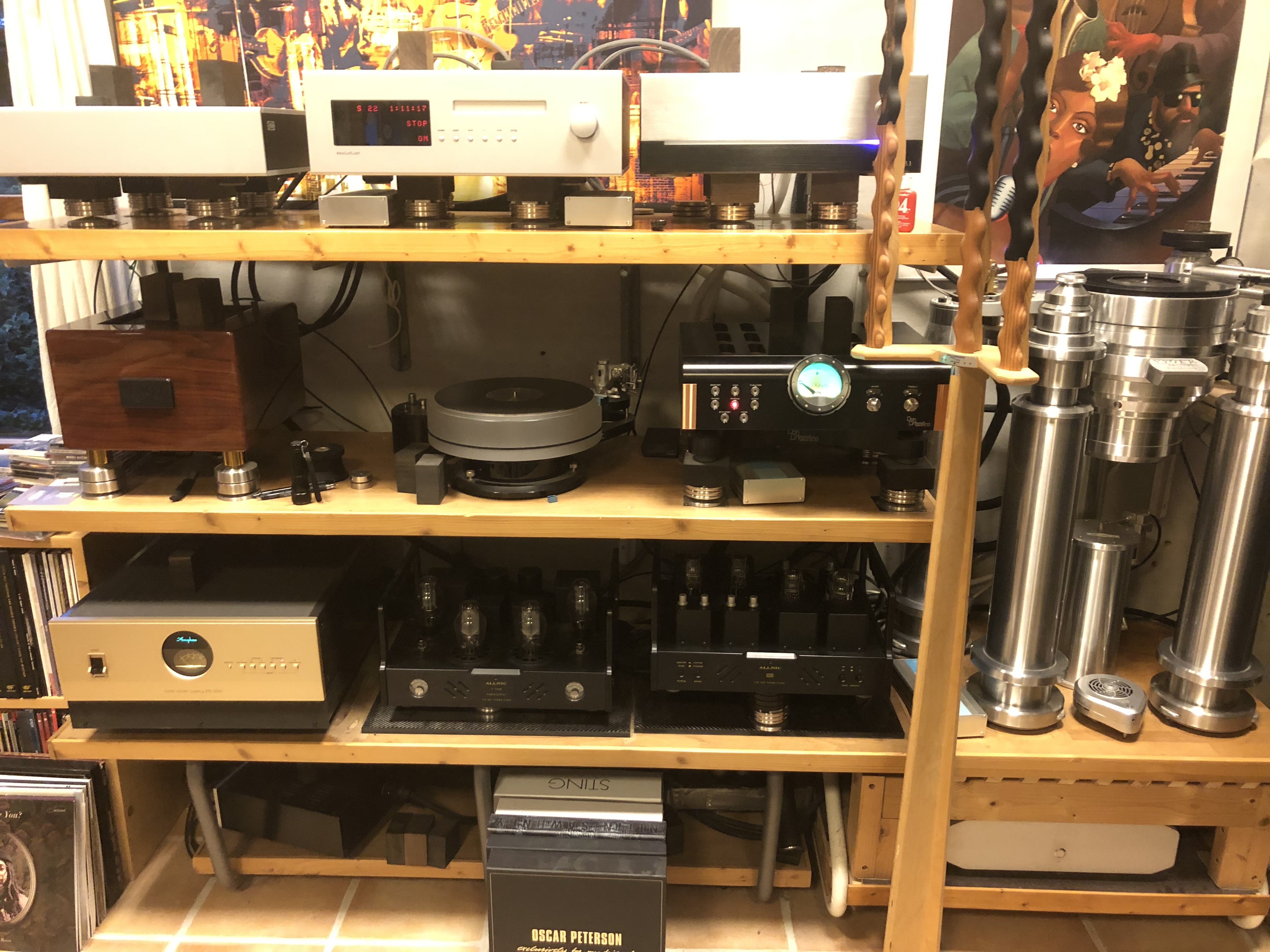
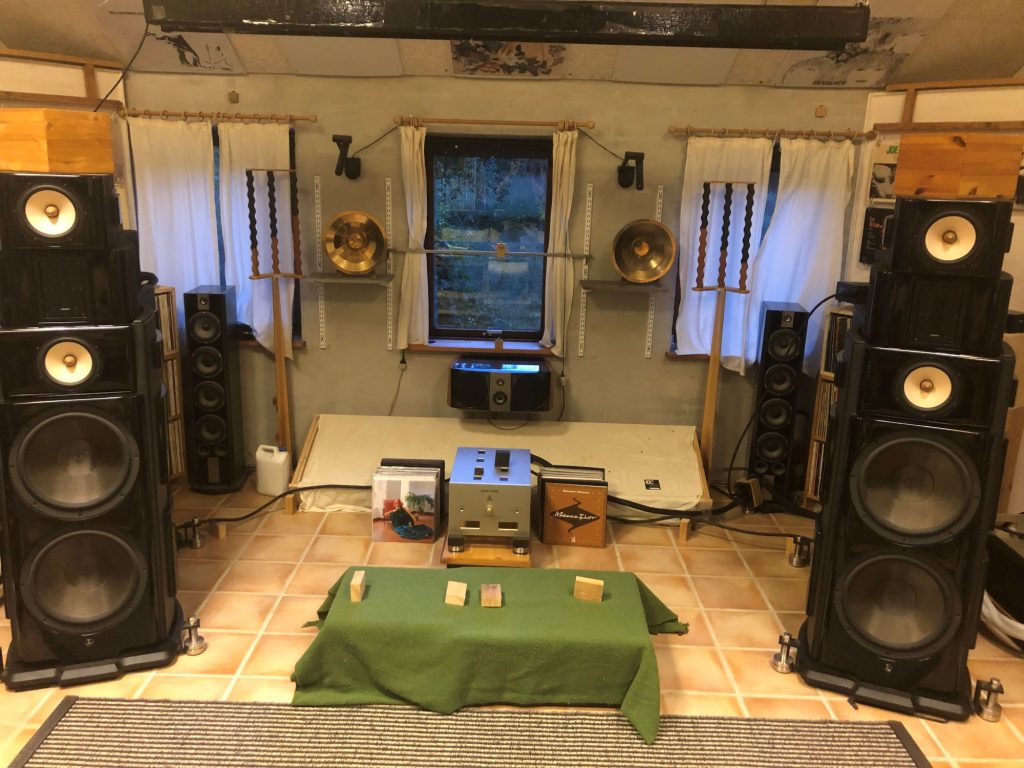
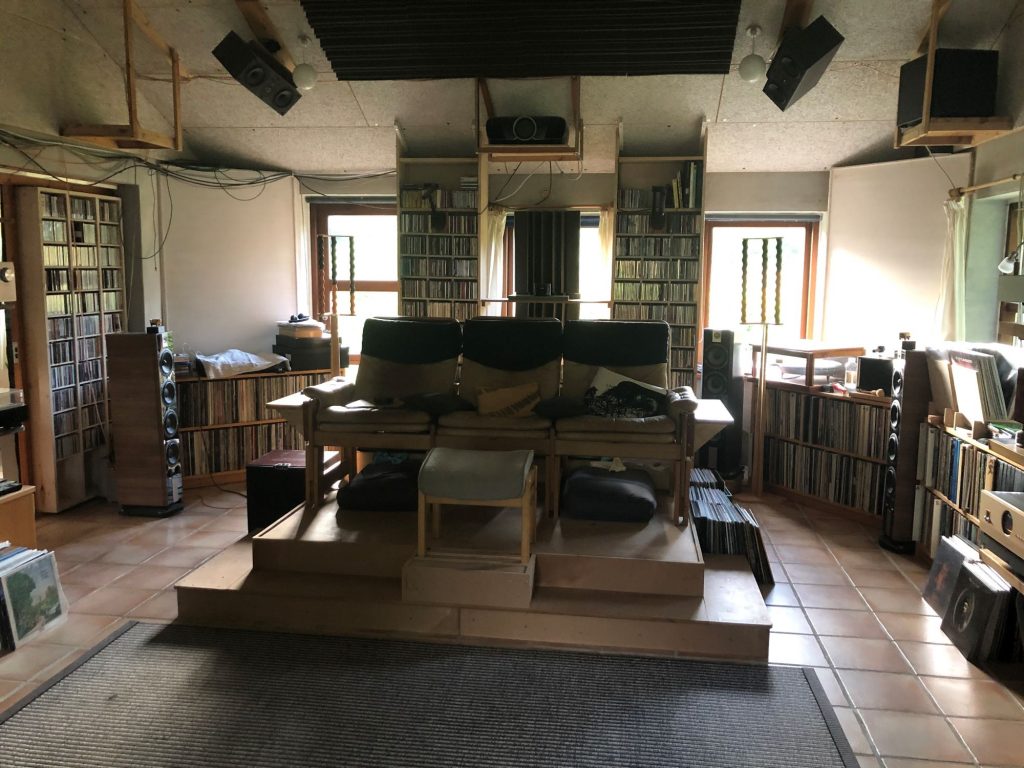
What about other linear trackers, especially pivoted ones?
The Vyger philosophy is air bearing, linear tracking, focusing on the mathematics of the build, and sonically it should be transparent to the record and the cartridge, and have transient impact.
I have heard Schroder LT, Thales Statement and Simplicity, Bergmann Sindre multiple times, and Galder in a compare to pivots, as well as CS port, Kuzma airline, Goldmund reference. It is impossible to have an exact compare. My guts says pivoted LTs are different, more like pivots in sound compared to such linear trackers. CS Port write up to come. The Bergmann Galder in below system was lacking in weight and easily outdone by the lowest model of Avid which had a SME V arm and vdh strad cart. I have heard many Bergmann Sindres and while they can do a nice midrange and highs with the red sparrow, and are very reliable, I found them wanting in bass and weight. The Holbo is an excellent lower priced LT for those constrained by budget. You won’t get the full weight and push and dynamic range but it is a bargain at its price with the arm.
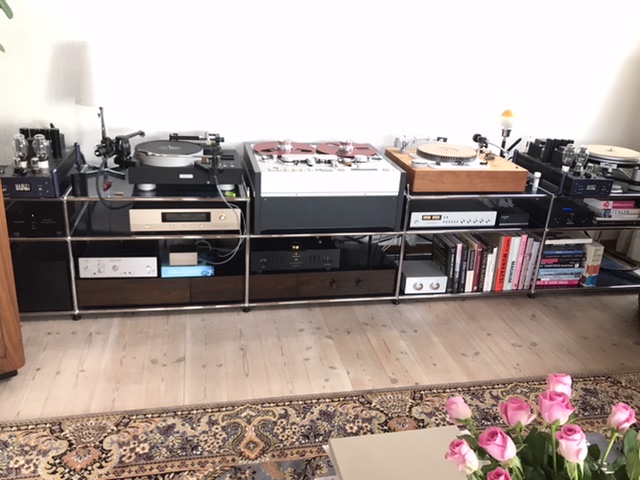

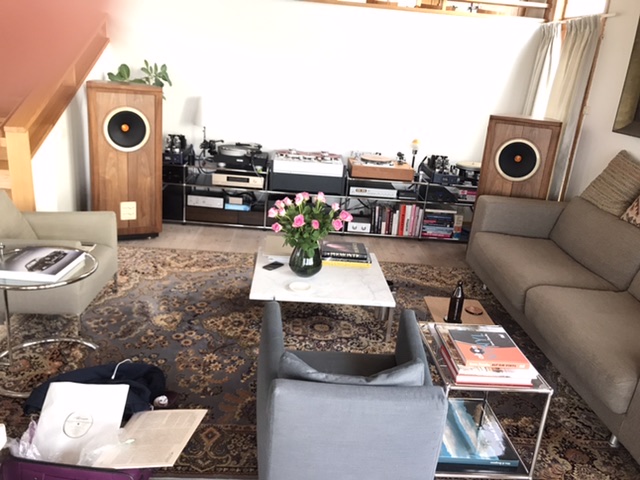
Back in 2018, when I heard the Versa Dynamics at Pietro’s and the Bergmann Sindre also in Milan, the Versa, with its air bearing and vacuum and linear tracking, did sound agile. I asked Pietro about this, and Pietro explained that not having skating or anti-skating allows these LTs to be agile. Now, with most linear trackers, there is insufficient bass, authority and weight as compared to pivots. It is only with Vyger and CS Port that I hear bass and weight, and this could be a function of the platter, the air pressure, or both.
The CS port is the only other high end linear tracking table today I have heard that is excellent in bass, and the TAT2 has an attractive retail price, and allows you to set up pivots alongside. However, I will understand a bit more of the LFT1 in a compare with Saskia and NVS in due course. That will be a separate article. Both allow you to use pivots anyway with some modification, so using both LTs and pivots on the same table is not an issue.
Many of us tend to make religions around an approach such as SETs, horns, belt, idler, etc. I don’t think linear tracking should be a religion given how many good pivots are available, but as with anything, implementation done right as with Vyger gives you excellence and appreciation of what linear tracking can do. And you can add a pivot to it with an additional board or buy another pivoted table.
Look, in a dream compare, you will compare Schroder LT, Thales Statement, Reed 5T (Anamighty Sound in Paris can help you with this), then pick up your favorite pivoted tangential arm and compare it to some of the top pivots such as Durand, SAT, Glanz, FR, etc…then pick up some of the top ones on a couple of your favorite tables and compare it to Vyger and CS Port. You will need to do this with a variety of cartridges. Once you know your answer, you can switch to digital.
That is a good segue to say, I got a glimpse of the Vyger speakers – Amargosa. Pino is voicing them with digital – an Oppo. He will add in the turntable later. His logic is simple…Oppo allows him to understand the sound of the speaker in isolation. He uses a classe preamp and Pilium monoblocks. All silver cabling. The speaker appears crystal clear and transparent in sound, liquid, superb extended highs that don’t get bright, and extremely coherent. Brilliant articulation on vocals. Similar to electrostats in the highs but more density. No multi driver sound despite having midbass woofer and bass woofer. The room is well treated so no boom great bass and dynamics without any mess. However I was unable to listen to it with my usual records on this trip, and will do so later. Would also like to listen to it with tubes. He also expects to create the flexibility to use tubes with an active sub.
Subwoofer is 4 th order and outside the crossover. Crossovers are at 150..400…2800 hz. Pino is anal about making sure they arrive coherently at the seating position at the same moment, and that implementation is excellent. The other thing he is anal about is getting a realistic thwack of the stick on the drum followed by the boom delay and decay properly over a 2 – 3 second period.
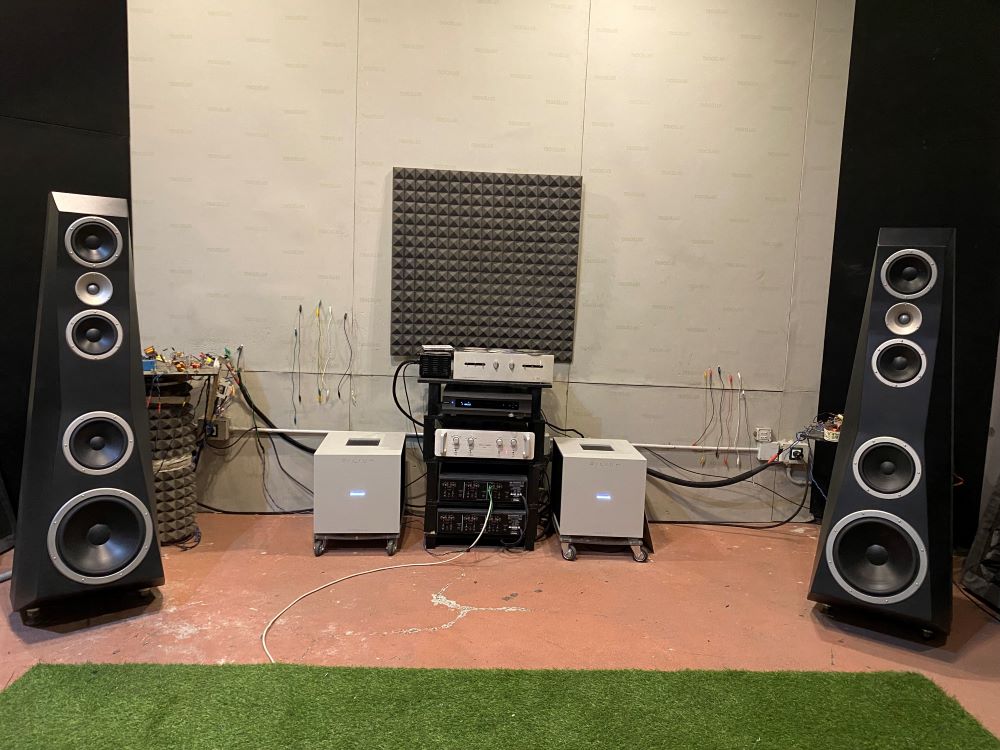
There are upgrades happening to the tonearm, with the new inertia counterweight, improved pumps. I have only heard it with the Vision arm. I can recommend this wholeheartedly to potential buyers on sonic grounds. You can contact your local distributor or Vyger if you need help with set up, and also to understand the service in your geographical area – how, if required, to service pumps and motors where you are located. With such a turntable, service needs to be paramount from both the manufacturing and the distribution team. I plan to hear a few more Vyger systems in my travels.
Do not use it if you just want plug and play, but getting it right pays sonic dividends and might not be as difficult as someone not used to it might think. Your downstream should not slow it down. Don’t try to drive a Ferrari on roads in Mumbai. If you change cartridges and recordings and don’t hear much changes, then getting the Vyger might not show you differences either. Play Qobuz.
Some pictures from the factory below. If you take a tour, you will see serious precision work being done on multiple parts. To discuss with Pino you have to be comfortable (not my forte) discussing measurements and tolerances at micron level of the various parts, some physics and mathematics. Even if that is not your forte, his attention to detail and obsessiveness over micro details and passion clearly comes through. He will spend time showing graphs and measurements on his computer, coming at design from a mathematical perspective. https://secure.aes.org/forum/pubs/journal/?elib=52 is the AES article that for him is the key to disk reproduction.
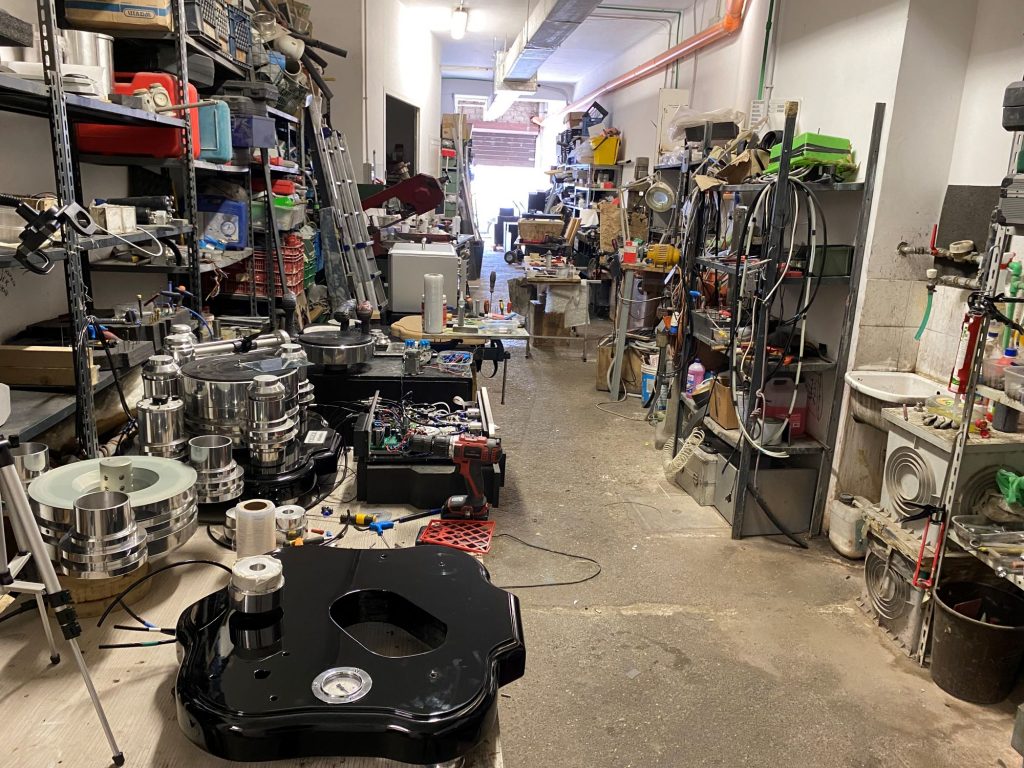
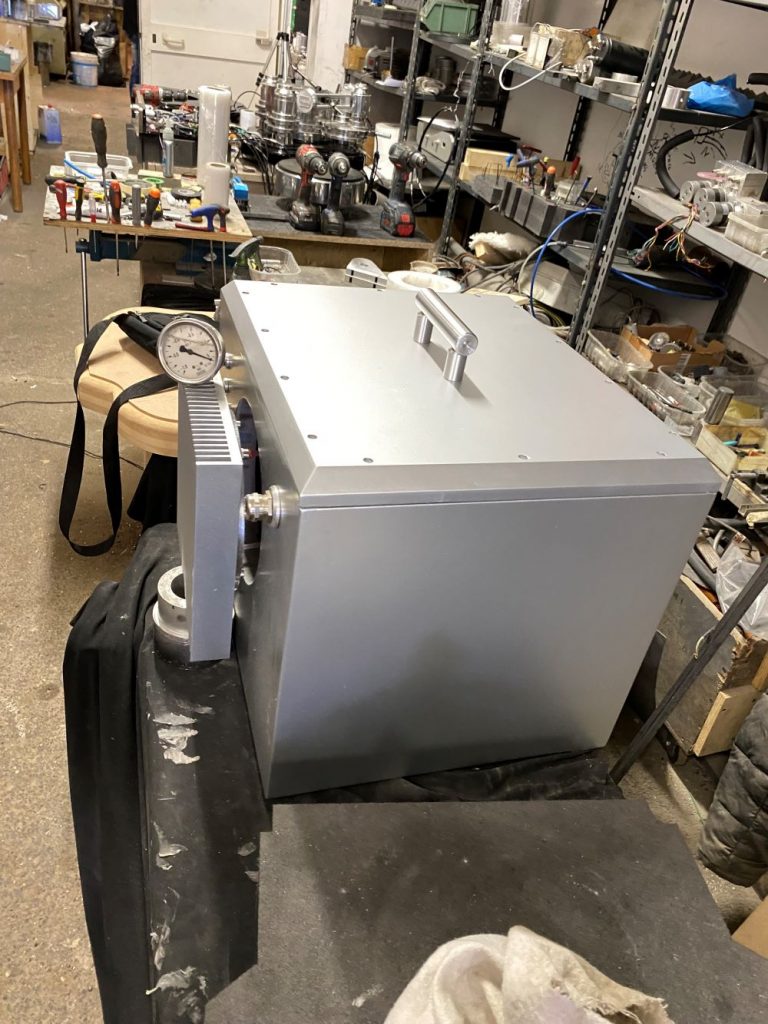
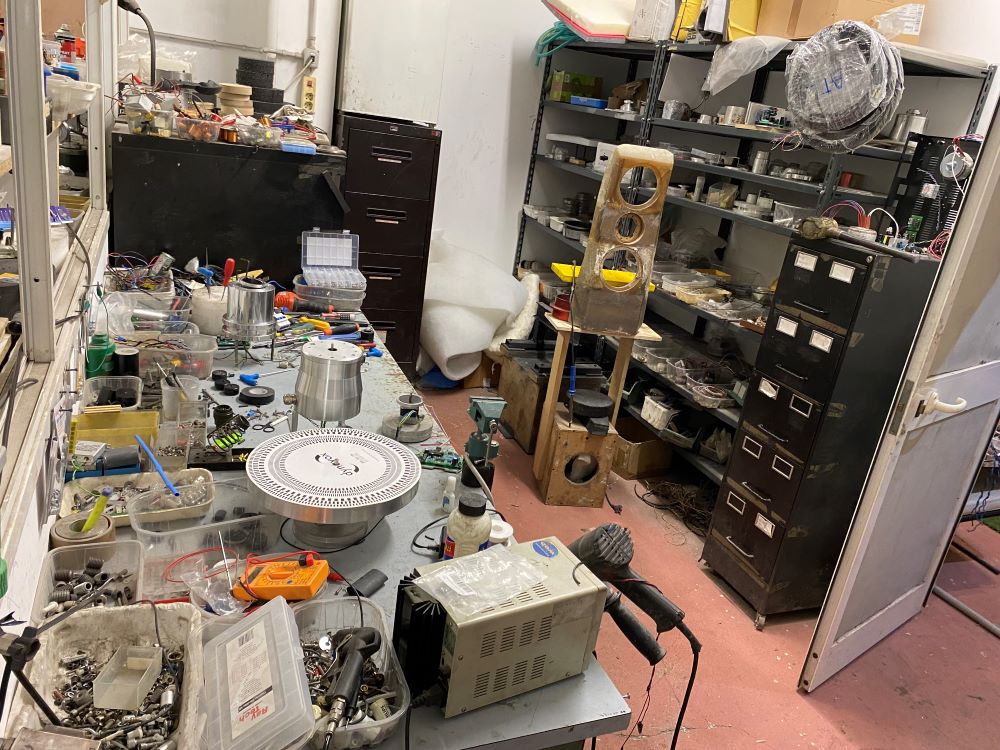
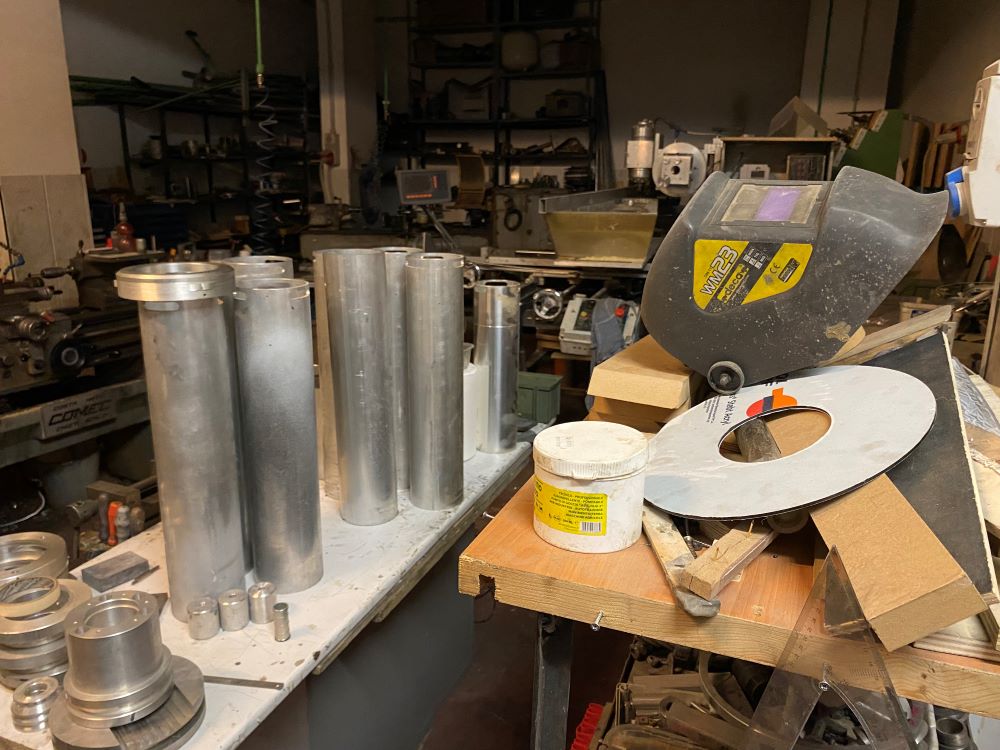
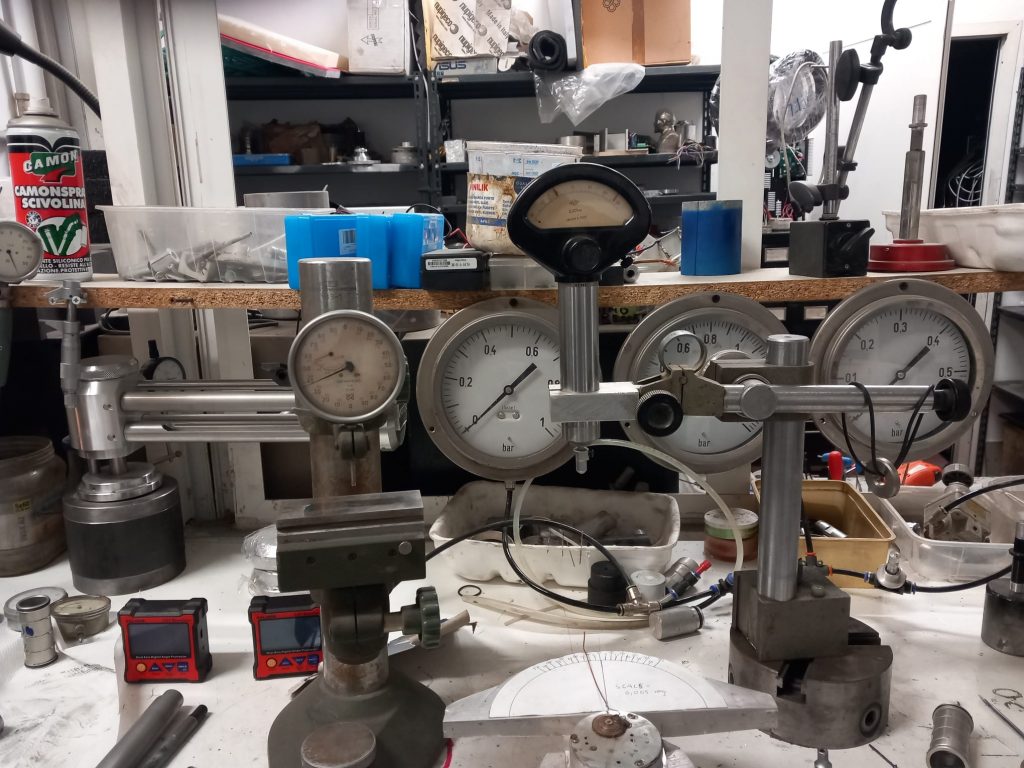
Pino mentioned that the gauge scale is 0.0001 mm
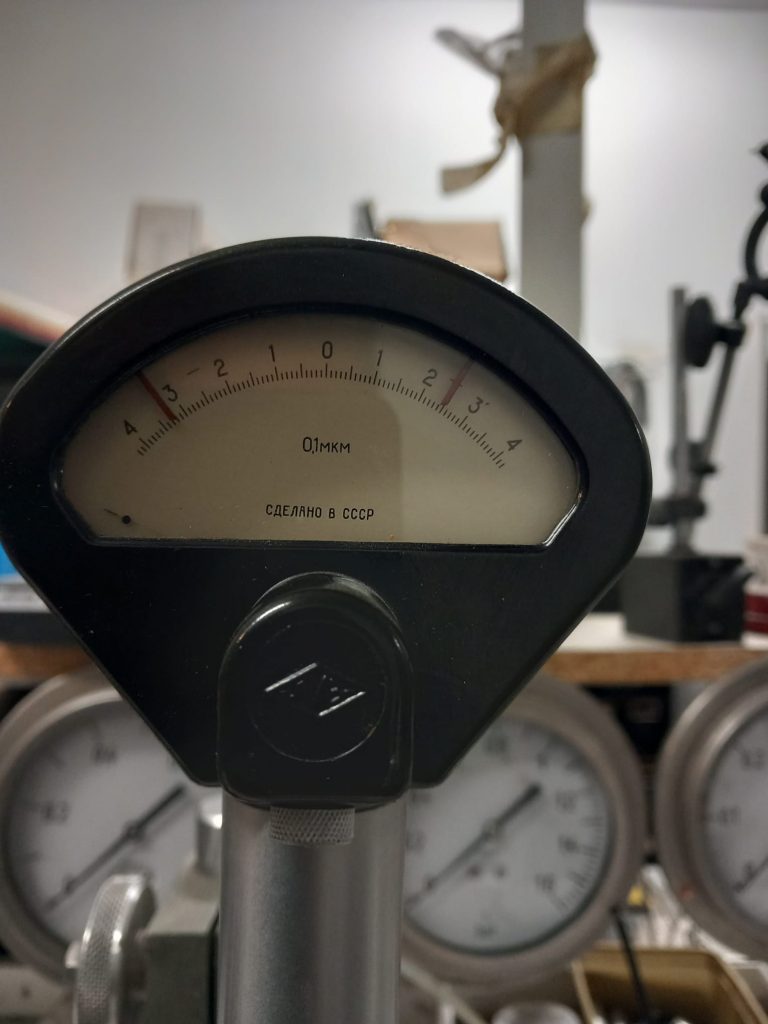
Pino also mentioned he supplied some precision parts earlier to INFN, which is a nuclear physics institute in Italy, the parts were used for their experiments with gravity. He did take me to INFN and also showed me some other parts in Rome that manufactured parts for the Vyger. I have not visited other TT manufacturing plants, but the investment here and the amount of parts to view what goes into one turntable is mind boggling
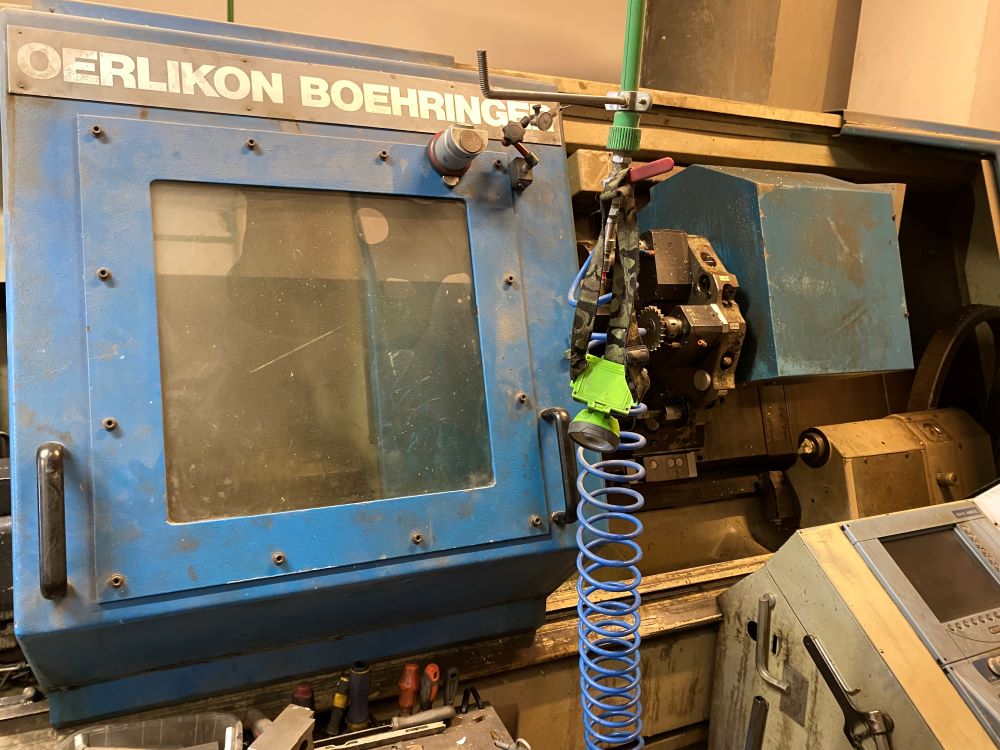

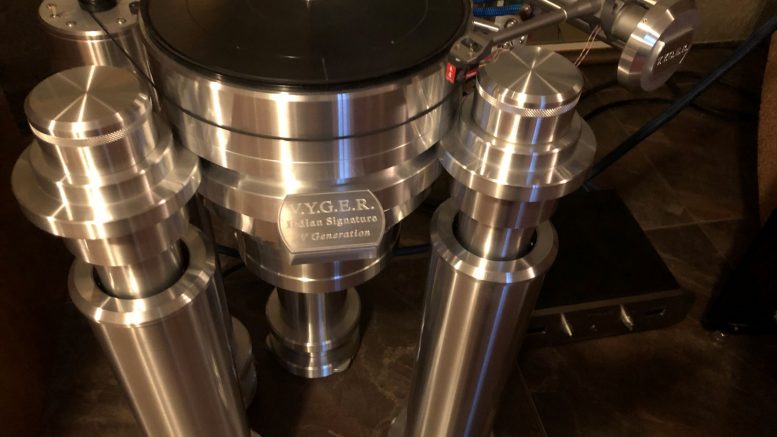
Be the first to comment on "V.Y.G.E.R"